During the later part of the Second Great Awakening, in the 1830s and into the early 1840s, there was a growing movement that came to believe the the 2nd coming of Jesus Christ would happen soon. Not only soon, but sometime within 1843 to 1844. They referred to this coming day as the Second Advent, which led to the believers to be known as Adventists.
However, this specific movement became more well known by another name: Millerism, and the followers were called Millerites. This name came from the leader of the movement, Rev. William Miller. It was he who came up with the calculations of when he thought that Christ would return, and then would take his message and spread it to all who would listen.
Rev. William Miller
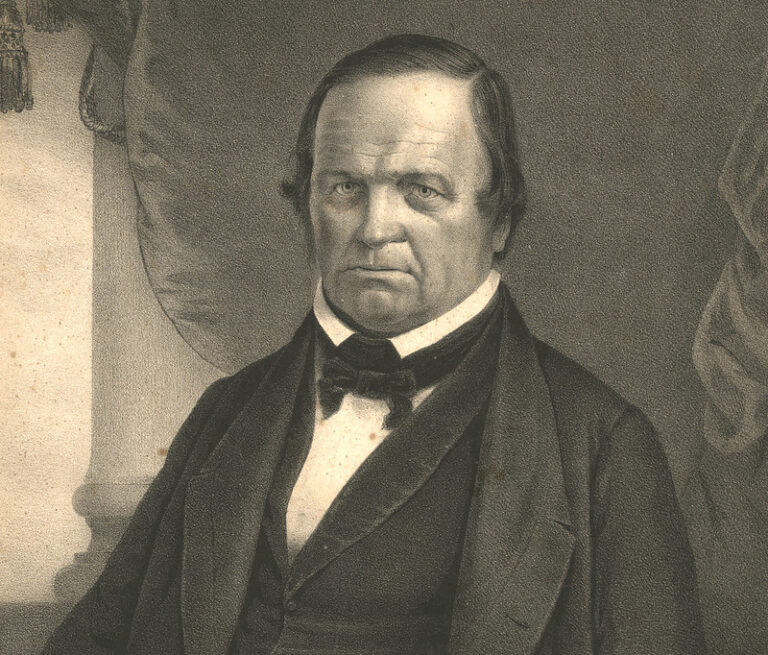
William Miller was born in 1782, in Pittsfield, Massachusetts, and grew up in rural New York state. In 1803, Miller married and moved to Poultney, Vermont where he took up farming. While in Poultney, Miller was elected to a number of civil offices. He was first a Constable, then he was elected to the office of Deputy Sheriff and later was elected Justice of the Peace. Miller served in the Vermont militia and was commissioned a Lieutenant in 1810.
Miller was a soldier in the War of 1812, rising to the rank of Captain. He saw his first major battle at the Battle of Plattsburgh, where vastly outnumbered American forces overcame the British. Miller wrote about his experience and came to view the outcome of this battle as miraculous, and thought that it was a sign that God had a hand in the outcome.
After the war, Miller began to study the Bible extensively, and through his studies became extremely interested in prophecies related to the coming of the Messiah during the Roman Empire, and his 2nd return in the future. Miller took all the numbers mentioned in these prophecies and in other parts of the Bible, and by the year 1818 came up with a calculation of when he believed the Messiah would come again, that year being 1843, although he would not make it public until years later.
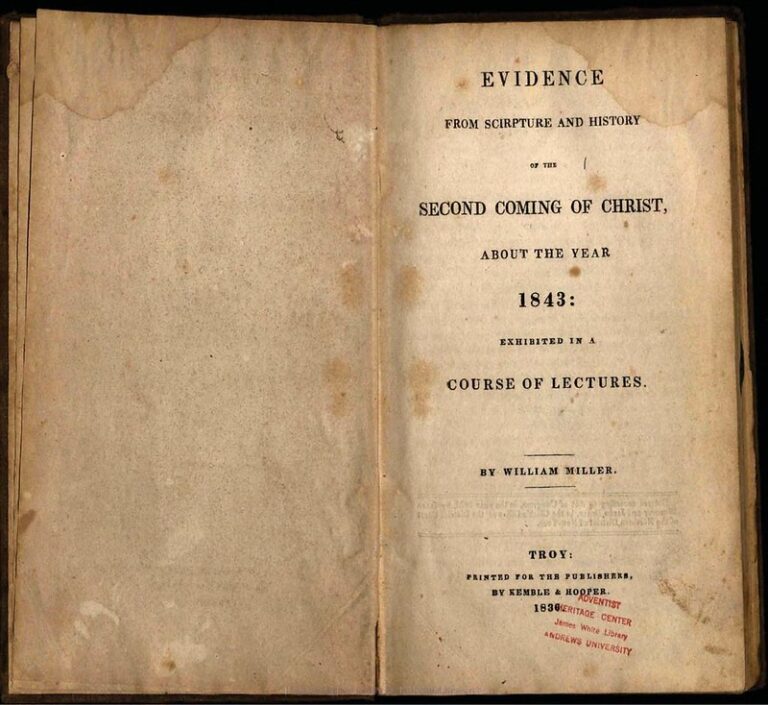
By 1831, Miller had begun to make public his predictions for the end of the world by giving lectures to any congregation that would listen. He took his message to churches all over the mid-Atlantic and New England, showing his calculations and Bible references and how they all added up to the year 1843.
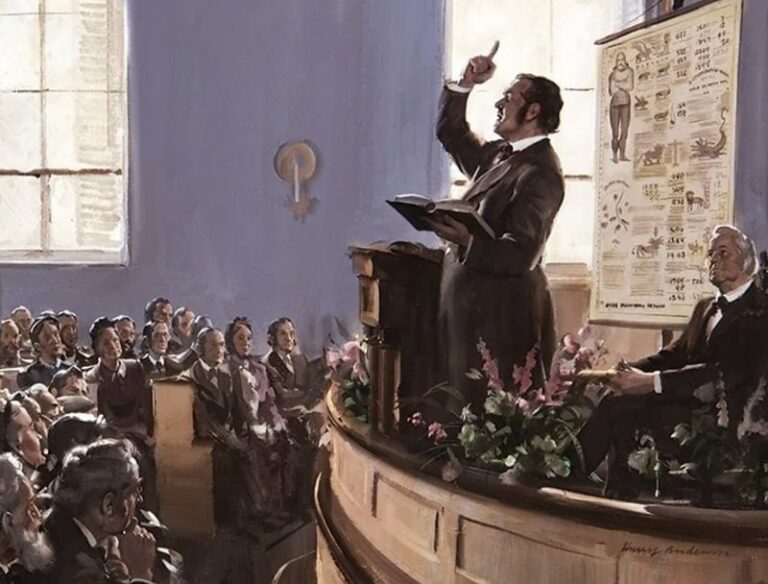
He had visual aids to help show how he came to his conclusions by interpreting the prophecies in scripture. As you can see they all add up clearly to 1843 at the bottom.
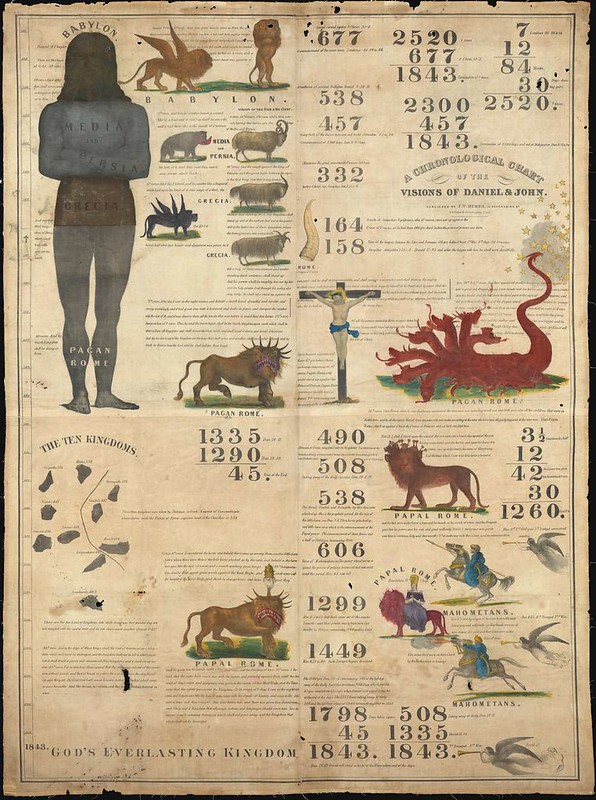
Miller’s followers grew. As they expanded, other voices started to help trumpet this message. By 1840 the regional movement had transformed into a national movement with the help of a publisher named Joshua V. Himes (1805-1895) who started the first Millerite publication called Signs of the Times.
Later, Himes would publish other Millerite papers in other cities. The second paper The Midnight Cry was published in New York City, followed by Trumpet of Alarm! in Philadelphia, the Second Advent of Christ in Cleveland, and the Western Midnight Cry! issued from Cincinnati. Most of these issues have all been digitized on the Adventist Digital Library and have been super helpful for research.
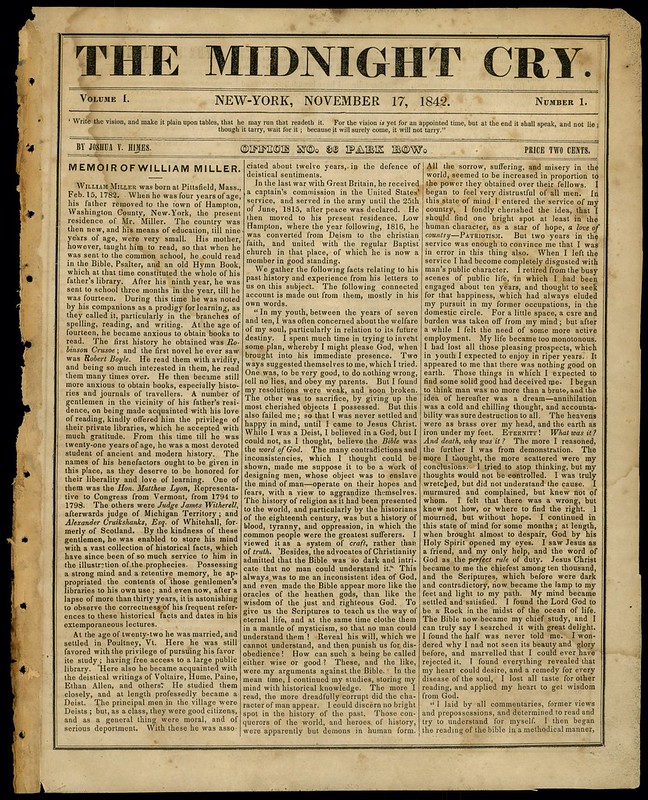
These newspapers would publish Miller’s ideas, but also challenge them. They would tell of the movement’s expansion and bring news of converts from other areas. But of course one of their purposes was to spread William Miller’s original prediction that the 2nd coming would be sometime between March 21, 1843 and March 21, 1844.
The 2nd coming in 1843
1843 started off with an impressive celestial event. The Great Comet of March 1843 could be seen all over the world, and the Millerites took it as a sign that they were right, that 1843 was going to usher in the 2nd coming of the Messiah.
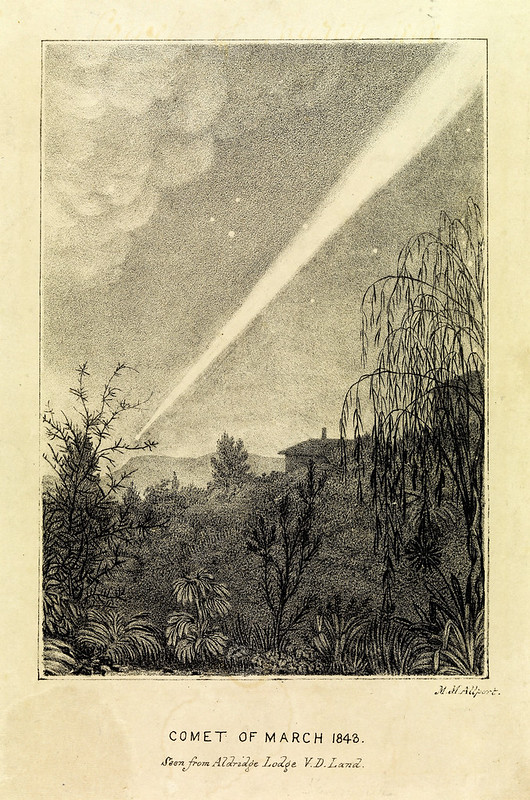
There would be a number of dates throughout the year 1843 to 1844 that were proposed to be the time of the 2nd coming.
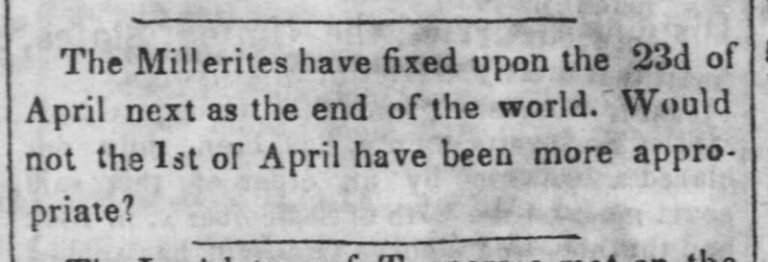
Of course as these dates came and went, it left the Millerites open to public mockery. In this caricature below, a Millerite sits in a large safe labeled “Patent Fire Proof Chest,” stocked with a ham, a fan (hanging on the door of the safe), cheese, brandy, cigars, ice, a hat, and a small book marked “Miller.” As he thumbs his nose, he says “Now let it come! I’m ready.” The “salamander safe,” probably a trade name of the period, is named after the animal mythically reputed to have the ability to endure fire (and, presumably, the holocaust) without harm.
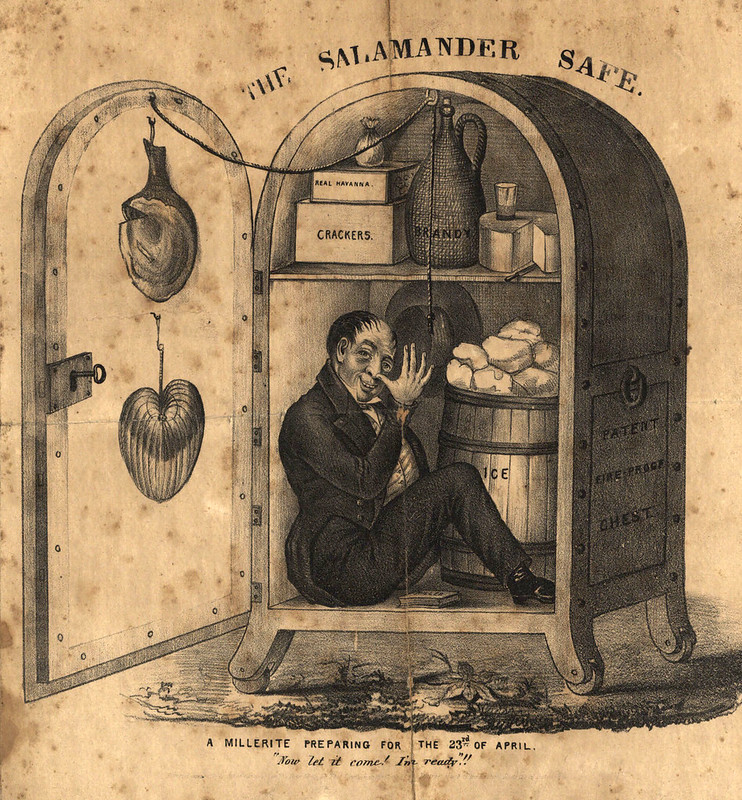
All the mockery however didn’t seem to keep the Millerites from growing. Camp Meetings helped spread the word and would bring more into their cause. There was by this time a growing number of followers near Middletown.
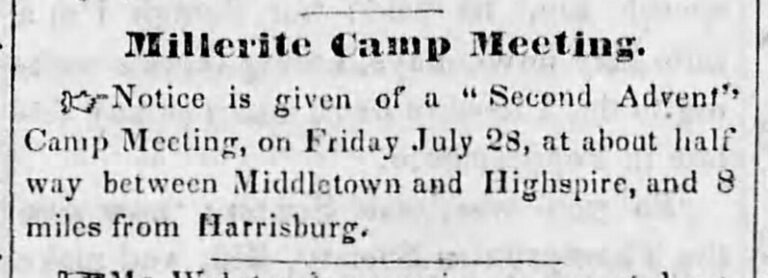
Camp Meetings were not unique to the Millerites. They were like church revivals that happened over the course of a few days with lots of preaching, singing, more preaching and then more preaching. But since people were out camping and were away from daily life, it allowed them to take part in all the continuous activities that happened during a camp meeting.
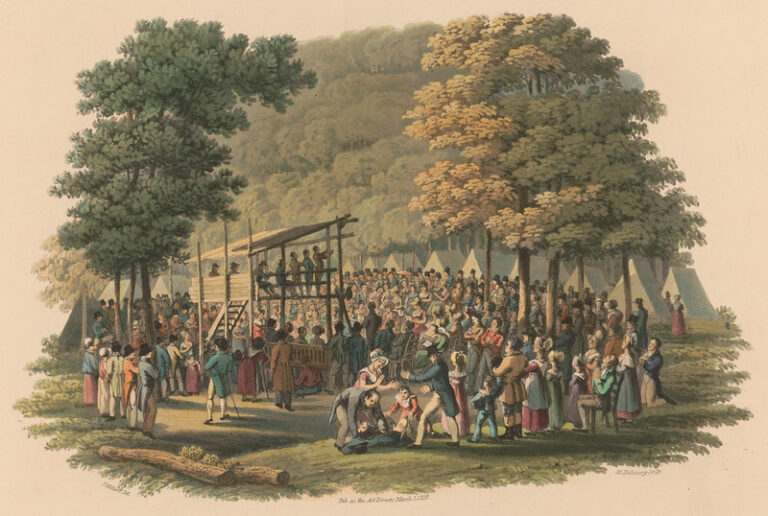
1843 came and went, then 1844 came… then March 21 of 1844 passed with no return of Christ. The Millerites were not deterred though.
It was in August of 1844, at a camp meeting in Exeter, New Hampshire, that Samuel S. Snow (1806-1890) presented a new interpretation of scripture, that Christ would return according to the Jewish calendar in “the tenth day of the seventh month of the present year, 1844”.
A new date - October 22, 1844
This new date was trumpeted from yet another Adventists paper, but not one published by Joshua Himes. The Last Cry! out of Exeter, NH explained the latest scriptural interpretation by Samuel Snow.
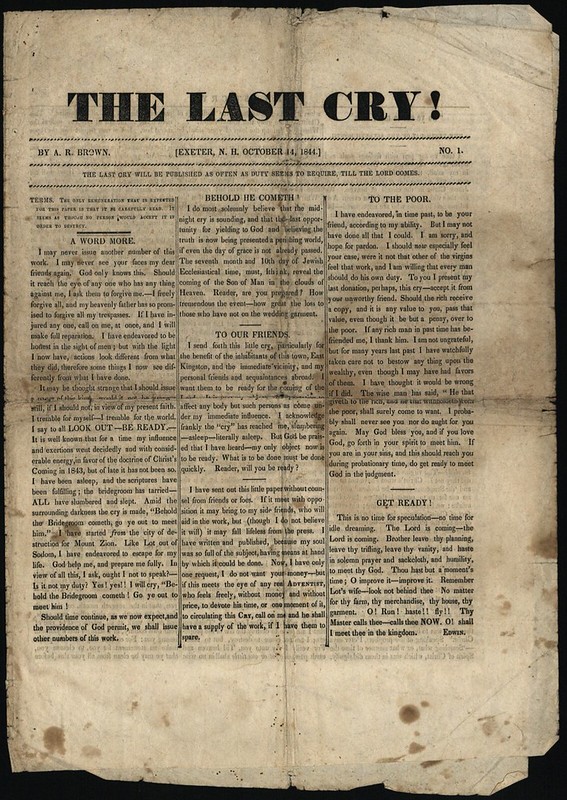
This paper had been enthusiastically trying to get as many to listen as they possibly could. They were so excited to think that the end of their worldly troubles would be over.

Many of these publications have very technical calculations, with lots of Biblical references, as they were always trying to justify why they thought Christ’s return was imminent. For this latest one, it all came down to the 10th day of the 7th month, in the Jewish lunar calendar. The first month in Judaism starts in the spring, typically in March.
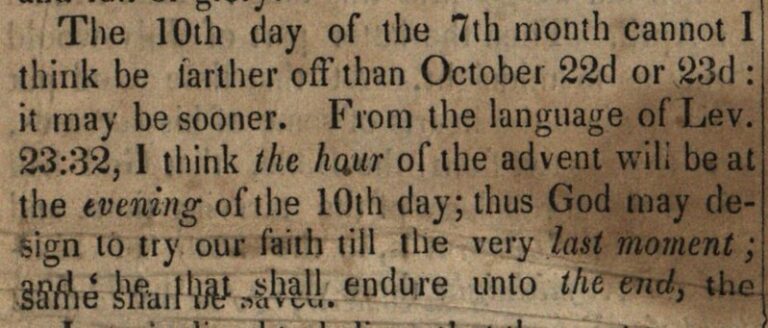
By the time October was in full swing, the publisher Joshua Himes became convinced of the new date, and began to publicize it in his newspapers.
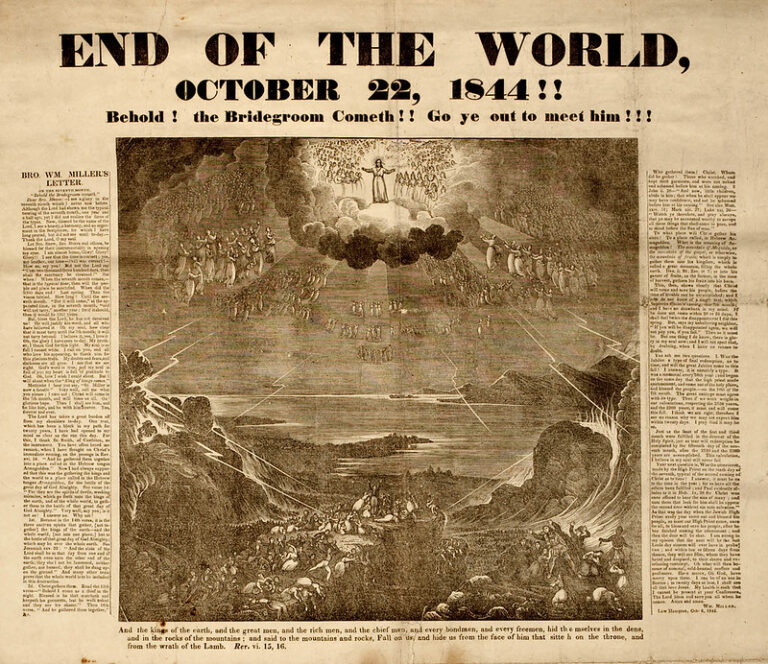
Once Himes was convinced, he then was able to convince Rev. William Miller himself. Miller wrote a letter to Himes that was published in all of Himes’ papers, where Miller thanked Himes and Snow for showing him the light that Oct 22 was the exact day.
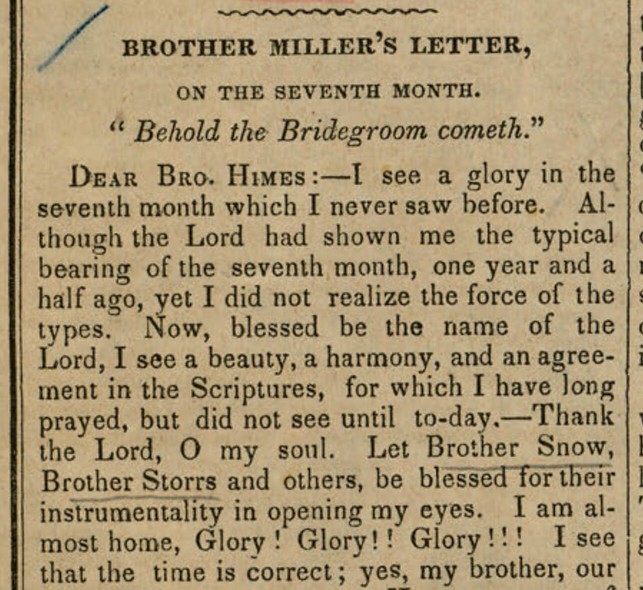
So both Himes and Miller were now on board with Oct 22, 1844, and now everyone in Millerism seemed to be excited about the date. However, there is another voice that would start crying out in the couple of weeks leading up to the event.
Dr. Gorgas of Yocumtown
On October 19, just a few days before the proposed 2nd coming, the Midnight Cry published an Extra edition that got the attention of a lot of people.

The special publication being referred to was the voice of Dr. Charles Rittenhouse Gorgas (1804-1892). Little is known about Dr. Gorgas. He was born in Pennsylvania, possibly in Lancaster County, and lived in York County near Yocumtown (across the river from Middletown). He was a descendant of Jacob Gorgas the clockmaker of the Ephrata Cloister in the 1700s.
At some point Dr. Gorgas must have become influenced by William Miller and had been following the math behind the 2nd advent predictions. In October 1844, Dr. Gorgas claimed to have a vision related to the Oct 22 hour of Christ’s arrival.
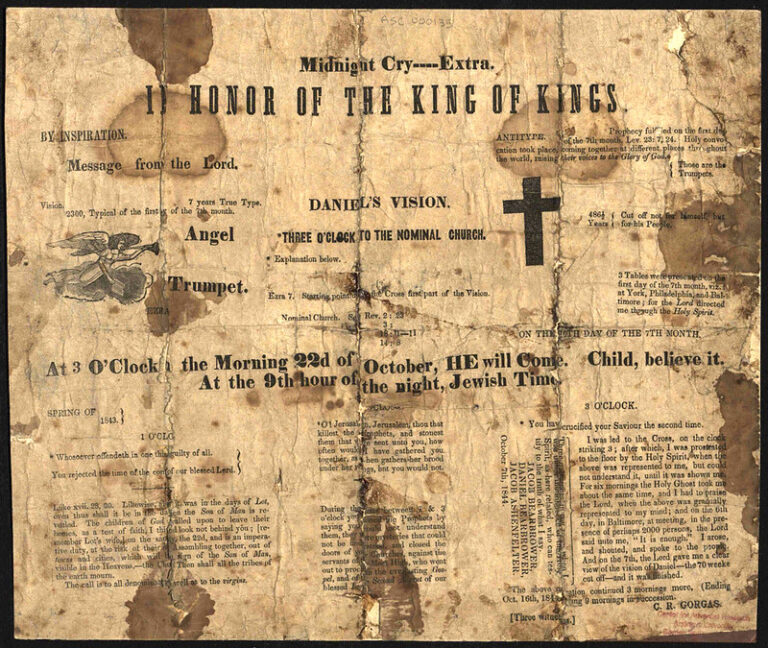
The newspaper above is the special extra edition of the Midnight Cry, and is a patchwork of writings from Dr. Gorgas explaining his vision. He says that he had a vision multiple times, starting on October 7. He had them while in York, Philadelphia and Baltimore.
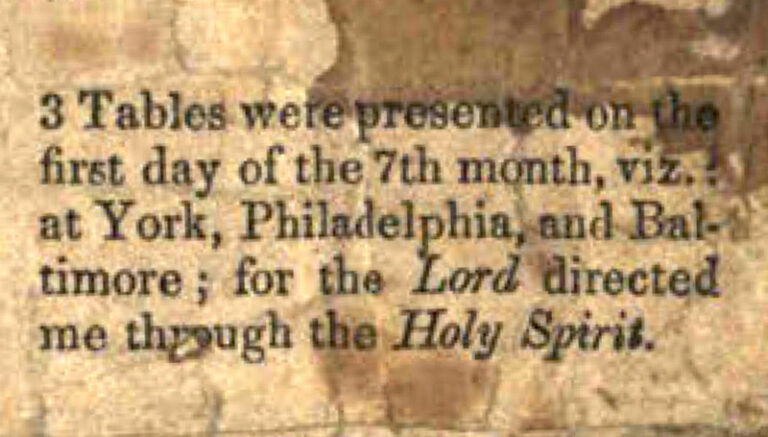
It’s a little hard to read on the Midnight Cry, but Gorgas talks about the vision he had, and the people who witnessed it. One of the new revelations Dr. Gorgas had was that not only Christ would come back on the 22nd, but it would happen at 3am east coast time. The text below is from a newspaper, but is the same from the Midnight Cry Extra, and is easier to read.
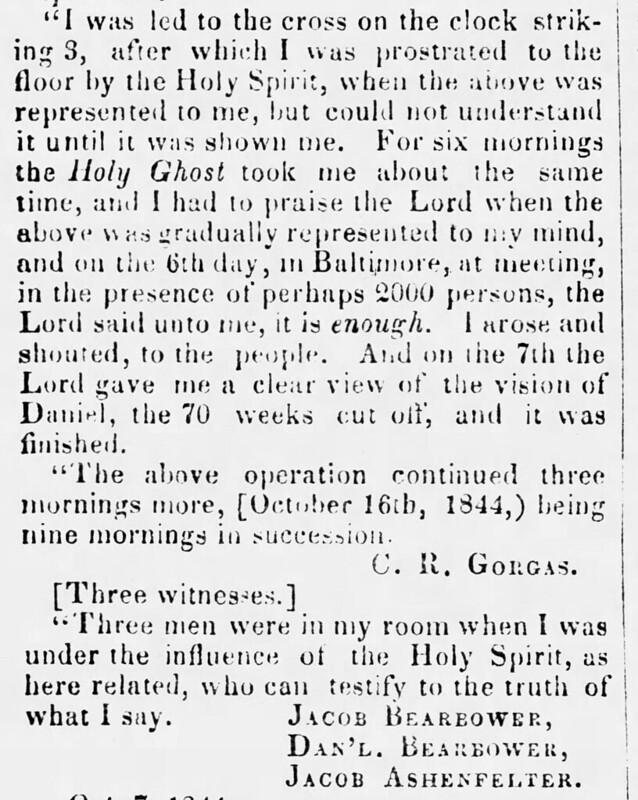
The last days
The Millerites were now all in on Oct 22nd as the day when Christ would return. And in the couple of weeks leading up to the big day, there was a wave of converts that came into their fold preparing for the end. Baptisms in a number of cities were reported.

New York, Baltimore, Philadelphia… reports of baptisms were coming from all over, as newspapers were eager to report on anything that had to do with the Millerites during this week.
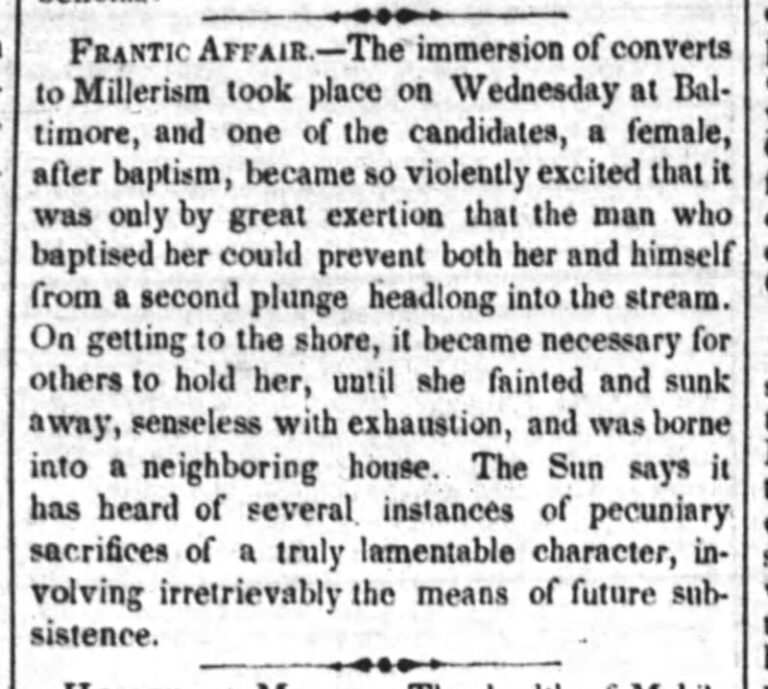
Middletown of all places still seems to be getting some mentions as place where there is a solid congregation of Millerites. There is no mention that I can find directly linking Dr. Gorgas to this congregation at this time, but it seems plausible because of how close Yocumtown was by ferry.
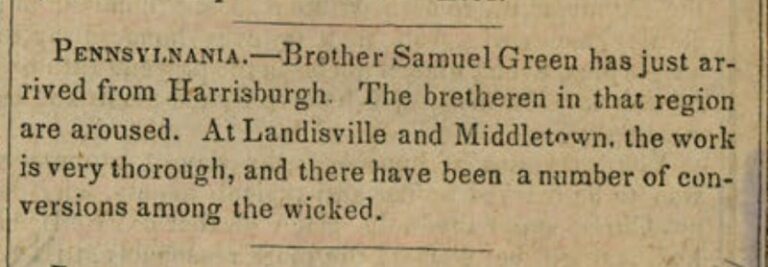
The regular newspapers were following what was going on with the Millerites daily, reporting on all kinds of stories they were getting from people leaving their jobs, to giving away goods for free.
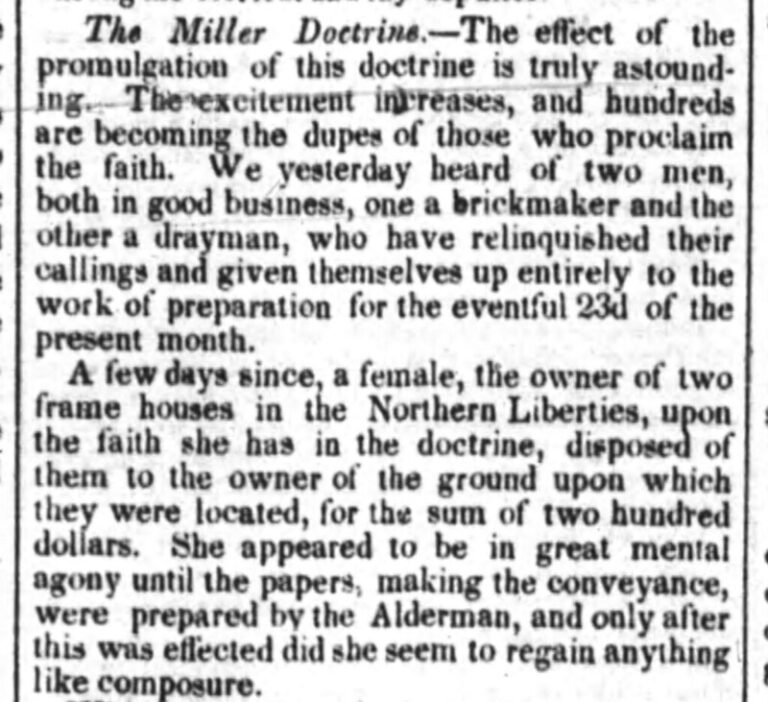
The public could not seem to get enough of these Millerites and were wondering what was going to happen next as they prepared for the end of the world.
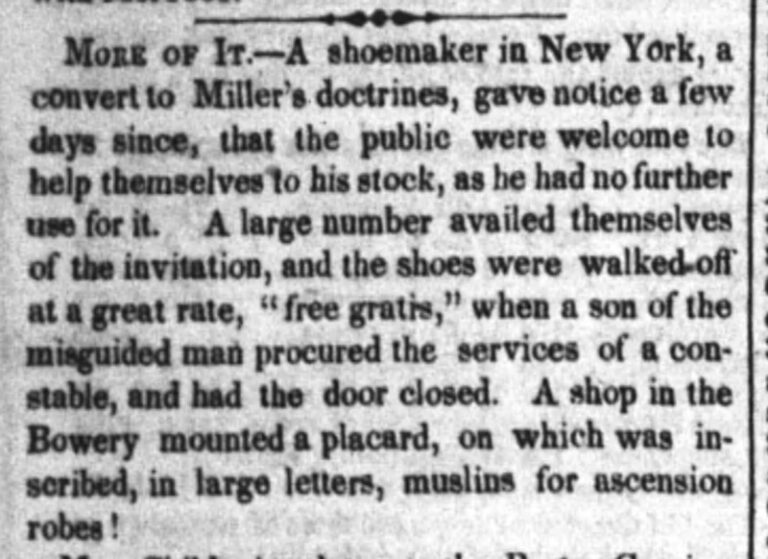
Get out of the cities
The other unique aspect of Dr. Gorgas’ view, in addition to the specific time of 3am for the exact time of the arrival of Christ, was that he thought God was going to destroy the cities, like He did Sodom and Gomorrah during the time of Abraham and Lot in the Bible, and people would need to leave their homes as a sign of faith.
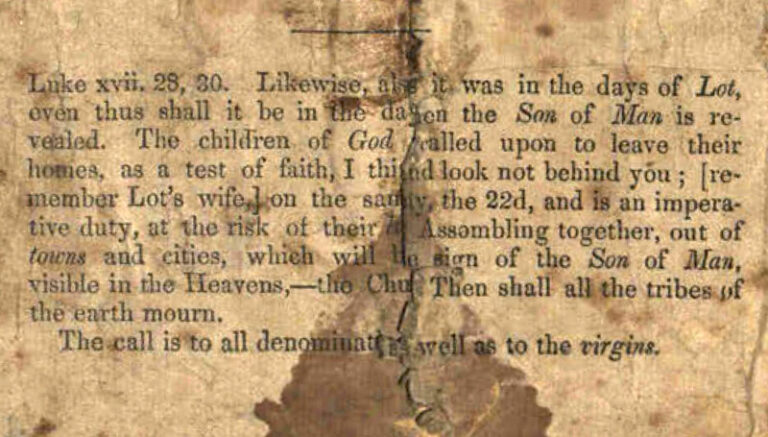
Because of Dr. Gorgas’ message, a few areas started to see encampments crop up a day or two before Oct 22. Philadelphia was one of those places, with reports of a few different groups leaving the city to establish camps. One of them was in Camden, NJ, just across the river from Philadelphia.
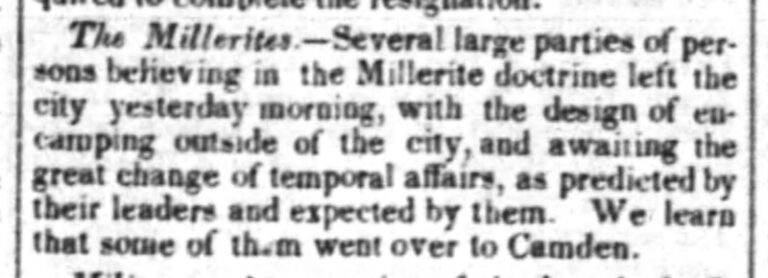
The biggest, or at least most reported on that I can find, seems to be a camp outside of Philadelphia on the Darby road, in a field.
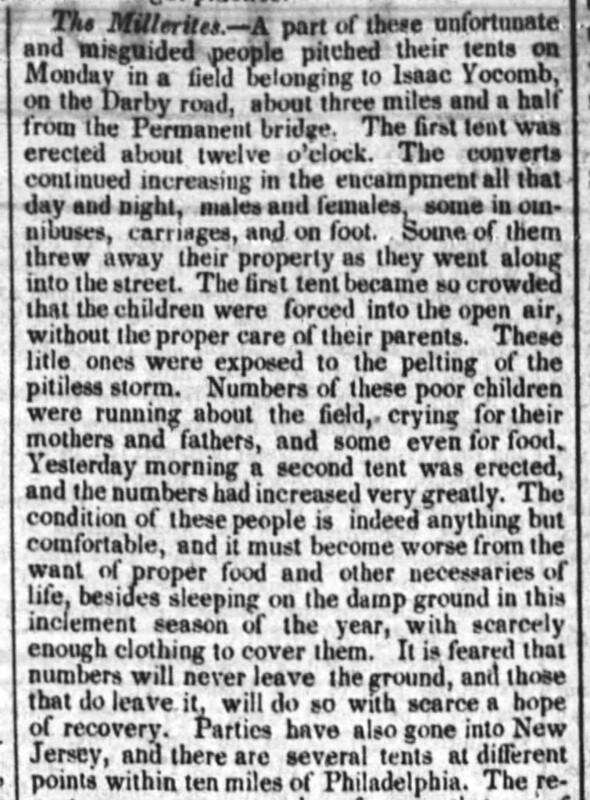
Some from the congregation in Middletown were also on the move to get out of the city. This next clipping is hard to read. It’s from a small Harrisburg newspaper, The Clay Bugle. In the 2nd paragraph it says:
“…we are informed from a reliable source, that quite a number of the faithful at Middletown, settled up their worldly affairs and on Monday afternoon proceeded to what is called “Hill Island” in the Susquehanna River, which rises several hundred feet above the level of the stream, there to engage in prayer and to await the coming of the Messiah.”
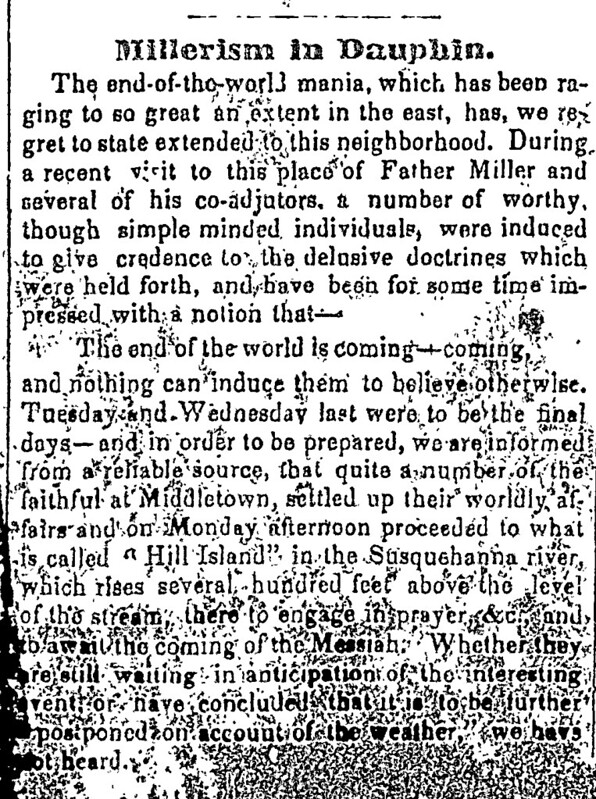
They didn’t bring a lot of provisions with them, since they were only going to be there for a short time, but I imagine the scene was similar to a camp meeting, where people were enthusiastically waiting the coming of Christ.
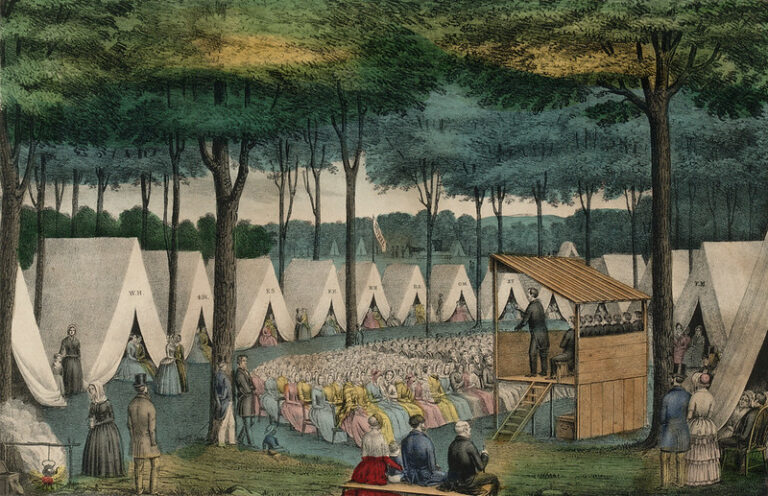
Hill Island - Oct 22, 1844
There are probably a lot more interesting things that happened around the country on the big day, but I’m most interested in what happened on Hill Island in the Susquehanna River, in-between what became Goldsboro, and Middletown, PA.
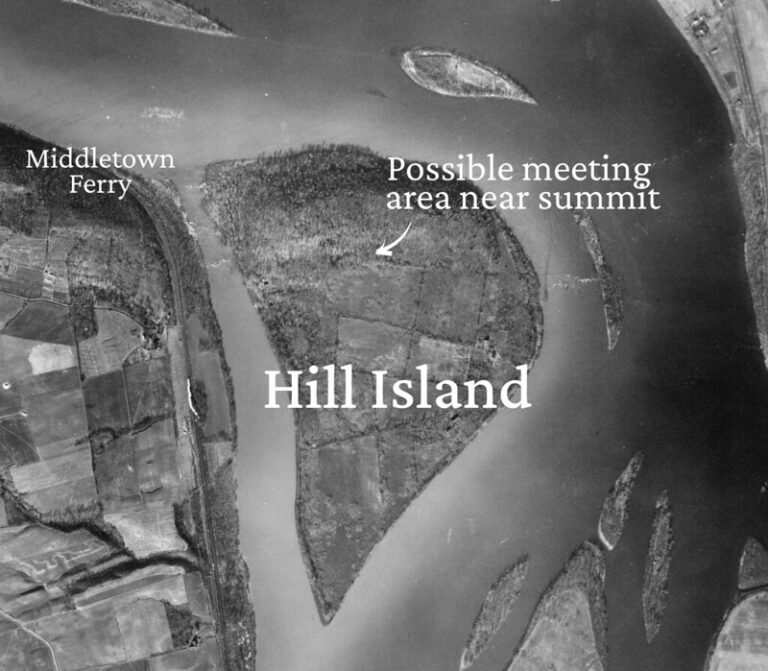
A number of years after the event, a witness reported what he knew of what went down on Hill Island, including who he knew that was there. The story was re-printed a couple of times. This one was a re-printing in 1892 but recounts the earlier telling of it.

The Jacob Shelley family owned Hill Island at the time, where they farmed the land and had a couple of houses and a barn. The Swatara Saw Mill was also operating on the Middletown side of the island at this time. The Middletown Ferry, owned by Henry Etter at this time, which crossed from Middletown to near Goldsboro, was likely the way they all travelled to the island.
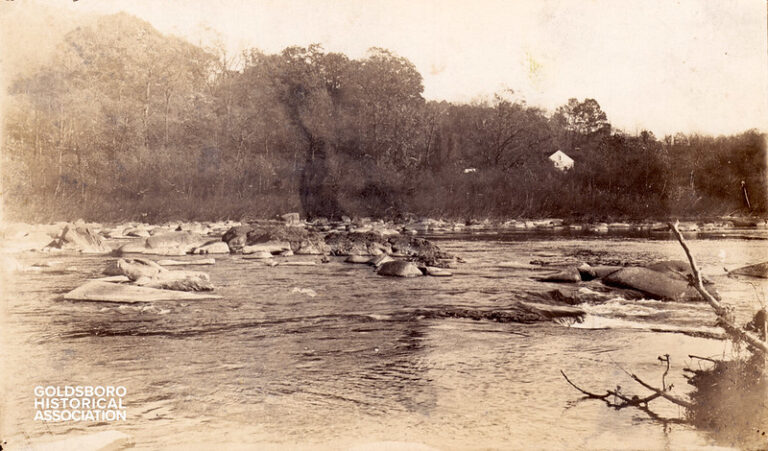
The story continues with their activities during their stay, and apparently Jacob Shelley was also a believer.
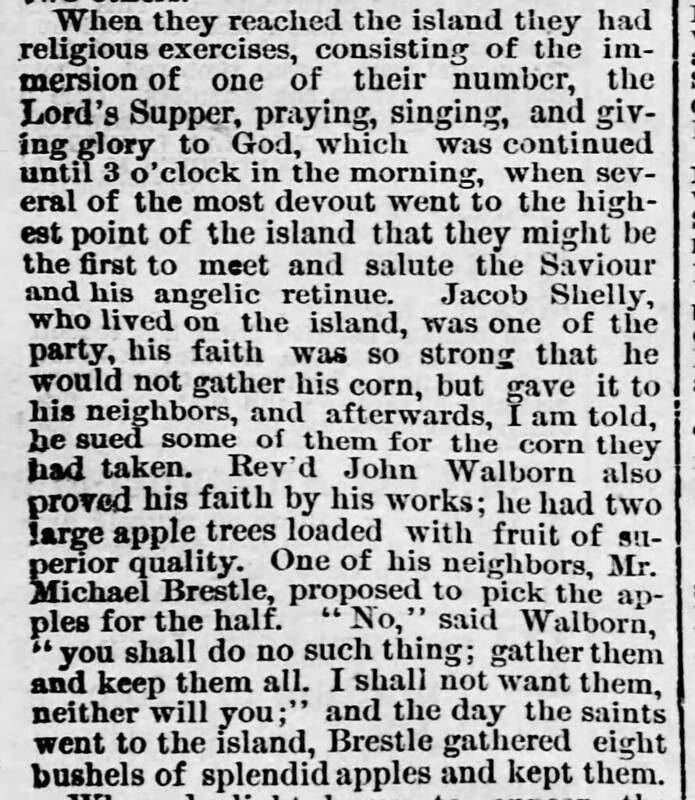
So how many were actually there on Hill Island? In the History of York County by Gibson in 1886, it gives a brief bit of history on Rev. William Miller and his followers in the area, and estimates there were around 100 people on the island that night. That’s more than the testimony referenced above. In the History of Dauphin County, a similar passage mentions there was a “score” of people there, which is about 20 people. That is more consistent with the above testimony, so based on those two sources I think around 20 may be the more accurate number.

So 3am arrived, and as we are all still around today, it is obvious that the world did not come to an end that night.
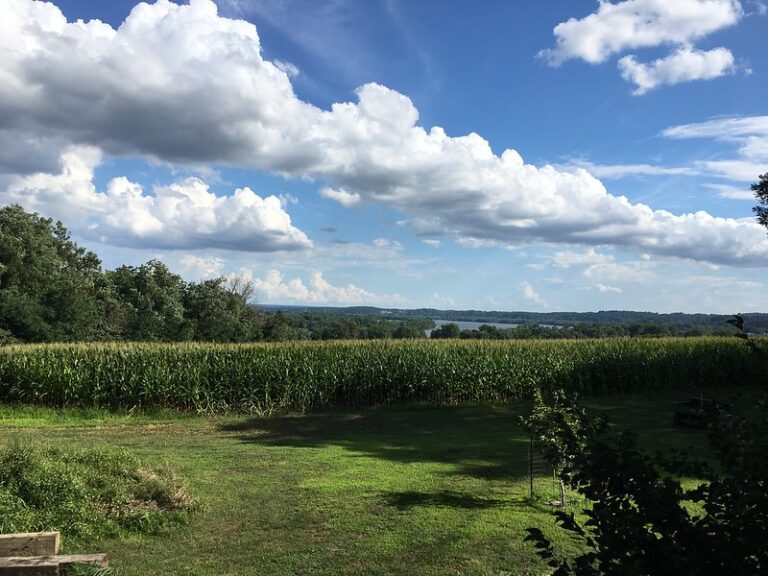
The Great Disappointment

The Millerite movement was now referred to as the Millerite Delusion, and this day, Oct 22, 1844 came to be known as the Great Disappointment. The camps broke up, and the people returned to their homes, trying to pick up the pieces of their lives and recover from their disappointment.
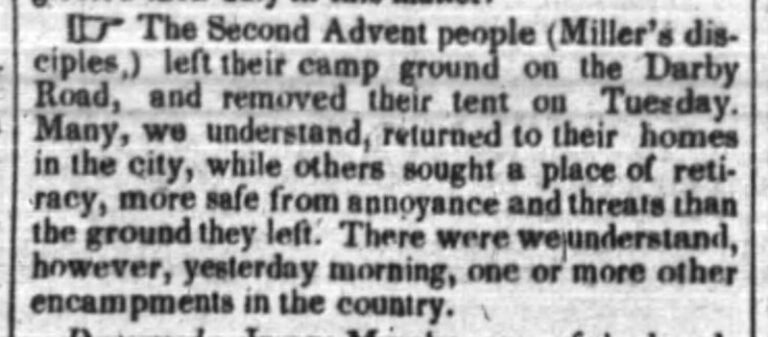
Of course the Millerites continued to be mocked, especially Rev. William Miller and Joshua Himes. The satirical illustration below shows the Millerites with William Miller and Joshua Himes and a devil characatured on a dais, looking up at a terrible dream ascension.
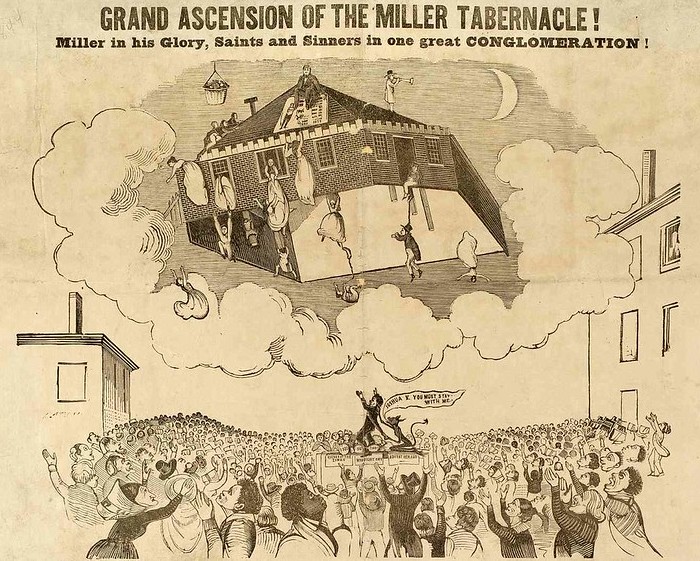
Appologies for Dr. Gorgas
Adventism was not completely dead. The Millerite publications quickly tried to save face and distance themselves from Dr. Gorgas, after their publishing of his famous vision in the Midnight Cry Extra.
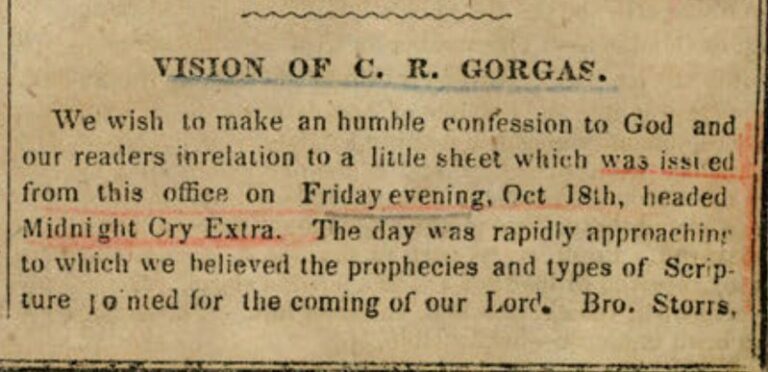
Apparently they tried to stop the presses after many of the Extra editions had already gone out on that Friday, and they then burned what they could on Saturday.

They also tried to distance themselves from the encampments that happened as well, continuing to blame Dr. Gorgas for making the Millerites look bad.
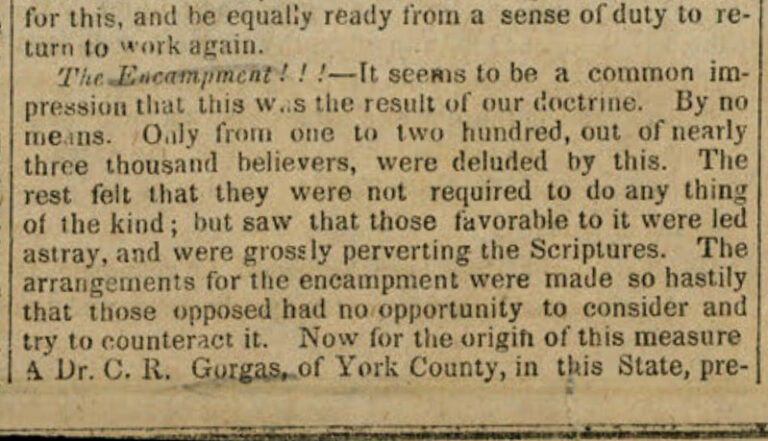
This encampment that they are referring to here is the one on the Darby Road near Philadelphia.

There is a lot more that happened in the immediate wake of Oct 22. In the following weeks the Millerite papers continued to correct anything that the regular newspapers reported that were untrue or misleading, like the idea that the Millerites wore ascension robes. This was an idea that was widely reported, but it wasn’t a part of their doctrine and it didn’t happen.
The newspapers published a bunch of sensational rumors, but in reality what tended to happen in all of these places was… nothing. The people came, and Jesus didn’t, so they just went home – disappointed.
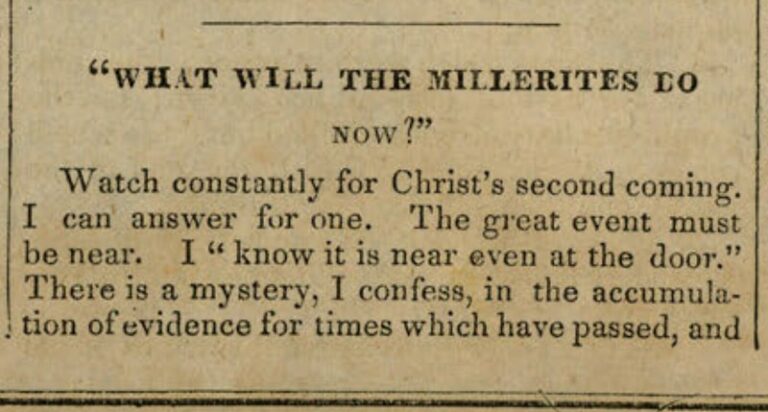
Millerism is dead, but over time some other denominations emerged out of it, mainly the Seventh Day Adventists.
William Miller died five years later in 1849, still convinced that the Second Coming was imminent.
Joshua V Himes would continue in the wake of the Great Disappointment. He would later take a prominent leadership role among Adventists, releasing another newspaper, The Voice of the West (which later became the Advent Christian Times). Himes would live a long life and die in 1895.
Dr. Charles Gorgas moved out of Pennsylvania to Ohio where he lived out the rest of his days with his wife, but it looks like he still never lost interest in Christ’s return.
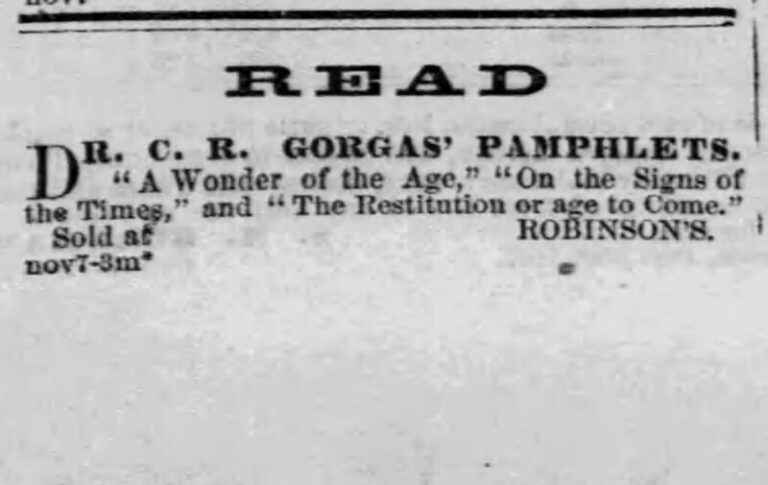

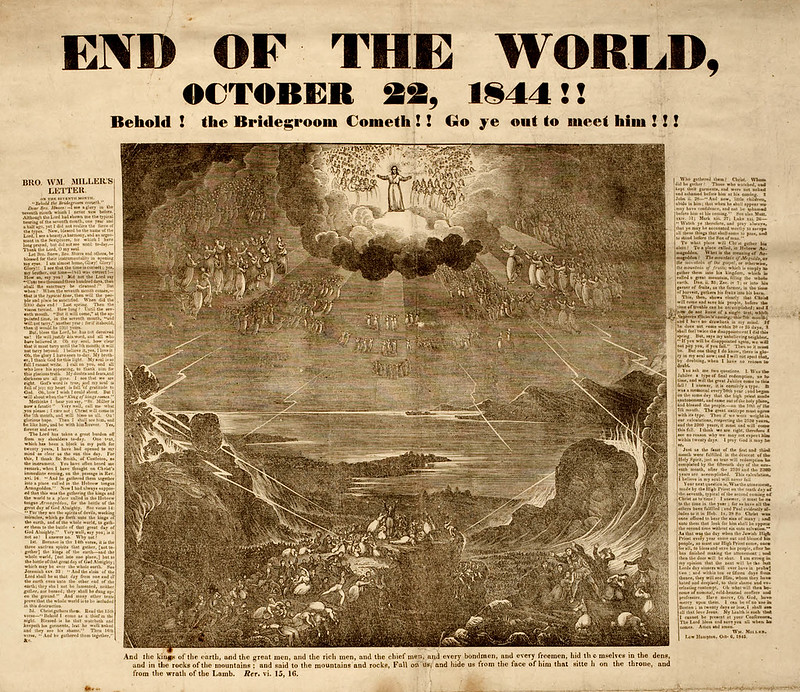
Matthew 24: 36
No one knows about that day or hour, not even the angels in heaven, nor the Son, but only the Father.
I think they forgot to read that part.